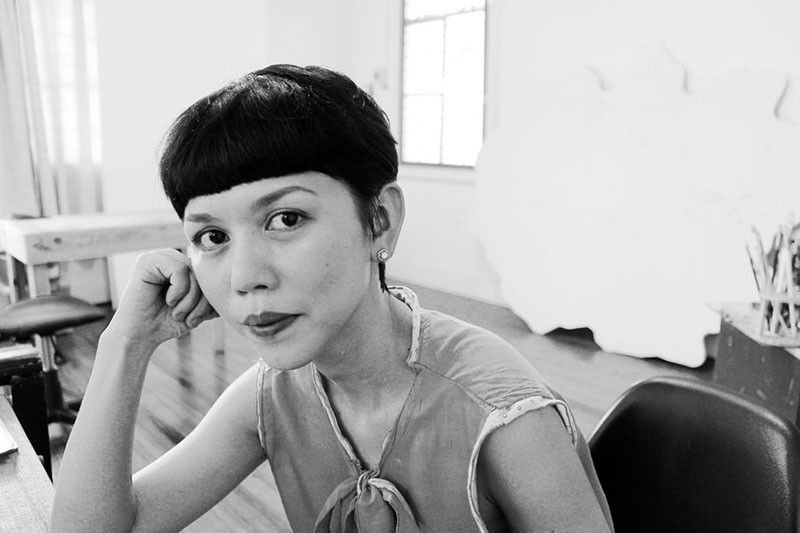Patricia Eustaquio’s appetite for deconstruction

MANILA, Philippines - Taking an object and taking it apart, physically and existentially, is artist Patricia Eustaquio’s realm of expertise, although she probably wouldn’t call it that. Expertise denotes precision, whereas Eustaquio’s work flows, often towards an abstract, beautifully disfigured version of the object itself. She takes a rock, a flower, a piece of furniture, rethinks its meaning and, in doing that, finds a different way of seeing its beauty.
For the upcoming Art Fair Philippines 2017, she studies the attraction towards art forms themselves, choosing a different medium within which to ask: Why is this desirable now? She creates a series of three black and white tapestries, featuring objects inspired by nature, which she created by hand from blobs of oil paint, photographed and translated onto textile, in collaboration with a workshop in Belgium.
“I’ve been working on this idea for a few years now,” she says. “Firstly, I wanted to make a painting that would use only textile. In the history of art, tapestries were sought after and then at some point, paintings in oil took over. My work explores this idea of changing tastes and appetites for objects or, in this case, art forms particularly. It’s interesting how certain forms of art are cast aside while others become the standard of the times. To hark back to this change I think is relevant to the fickleness of contemporary art today: why are some forms of art considered more valid than others, for example? I think it’s a good question to ask in an art fair, especially in Manila where the audience is still forming its opinions.”
Eustaquio says arriving at this interest in “human appetites” came naturally. “It wasn’t a flash of realization or anything like that. At some point I realized that I was interested in something human, something that humanity itself is curious about. Appetites encompass philosophical, religious, social and historical spheres. The human appetite for something, for anything, is a curious mechanism and I suppose, bit by bit, I wanted to explore this idea,” she says. The many layers to her work reveal this exploration, how she dives into an object as though material things possess something that resembles human consciousness; and looks from the inside out, how human beings view it, if they cherish it, how attitudes towards it have changed over time.
She says, “Earlier on in my practice, I explored memory and nostalgia, and the narratives the mind weaves in its desire to remember, to hold on to memories. At the same time, I wanted to explore how materials or media itself related to our perceptions and memories. I wanted something round to examine from many angles: a sphere that references the complexity of our attitude and behavior towards desire so it was and has been always important to experiment with making objects that relate not only to our sense of want, but also our sense of history. How crochet lace, for example, remind us of our grandmothers or great grandmothers, and how its transformation or translation into an art object can allow us to enter a narrative on social class or art history or feminism and so on.”
REIMAGINING BEAUTY
Eustaquio’s objets of desire are not realistic. In one of her millefleur-inspired tapestries, there is a sense of nature, but there is no moss, no dirt, no foliage. “When I work, I try to include elements of composition or decoration that, art-historically, had once been standards of beauty. There is that tendency to mimic existing objects. But then I combine that with something totally different, something a little off. I don’t consider them beautiful. What I want for them is to be interesting,” she says. The viewer is compelled, whether by virtue of curiosity, awe or confusion, to question what they see. They recognize it because they’re used to seeing it — the flower, the rock, the sofa — but completely taken out of context, it becomes something new.
“I’ve always been interested in making things,” says Eustaquio on how her career began. This appetite for creating finds a new platform in tapestries, once a medium for showing off wealth and power, and today, by Eustaquio’s hand, a medium that questions its own relevance in local contemporary art. How desirable is it now?















